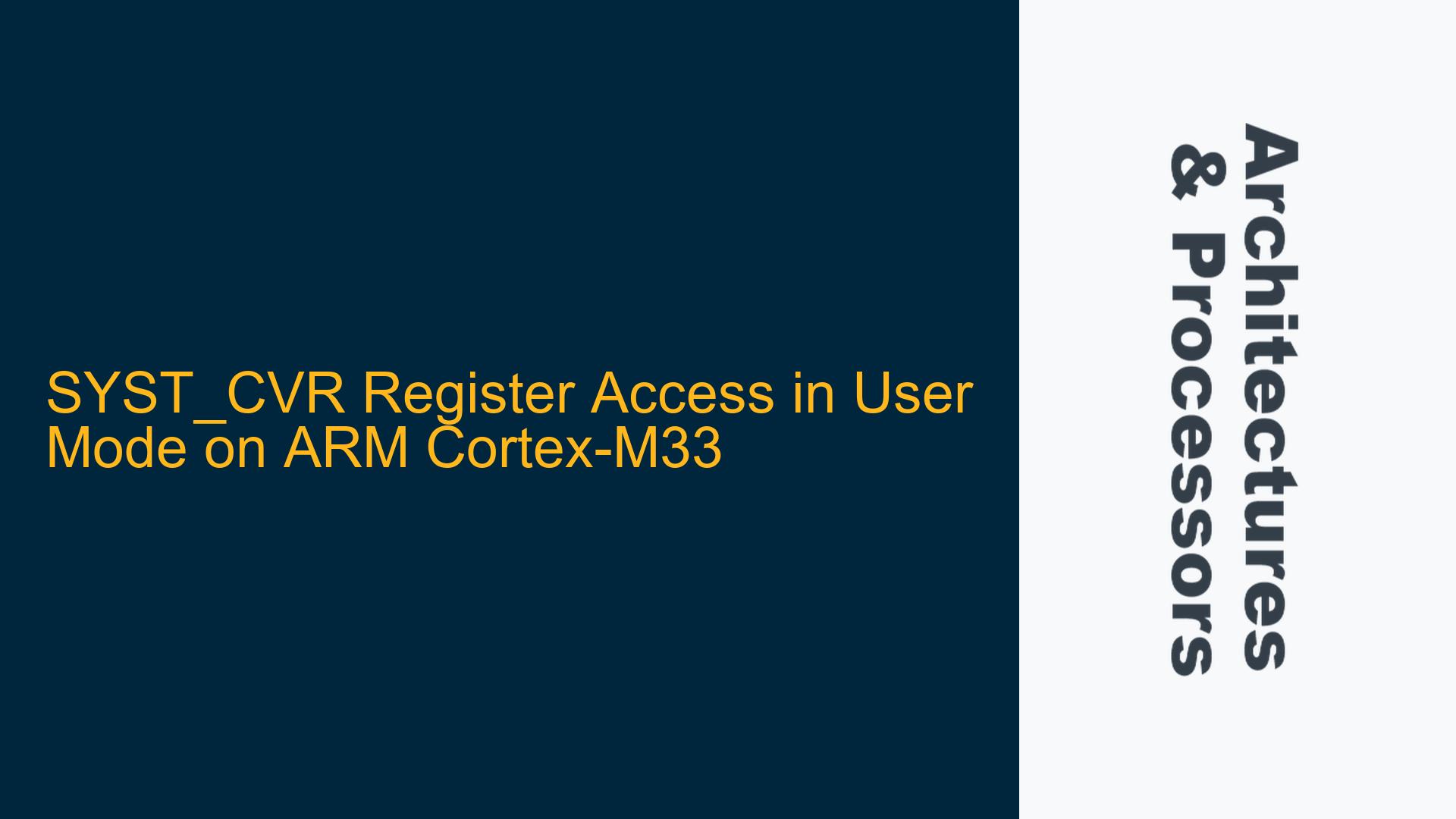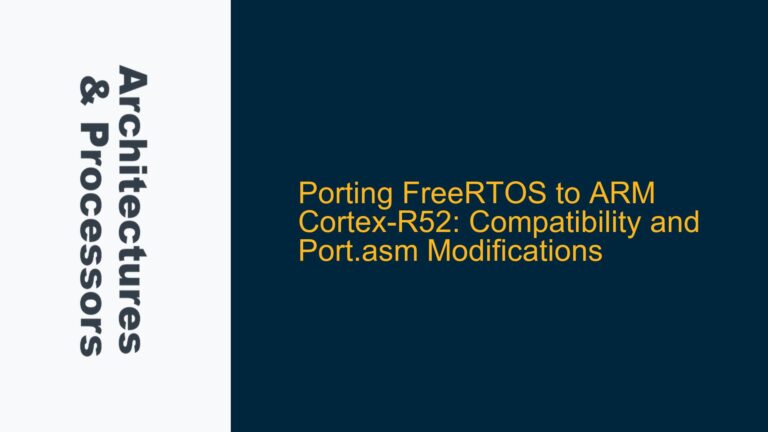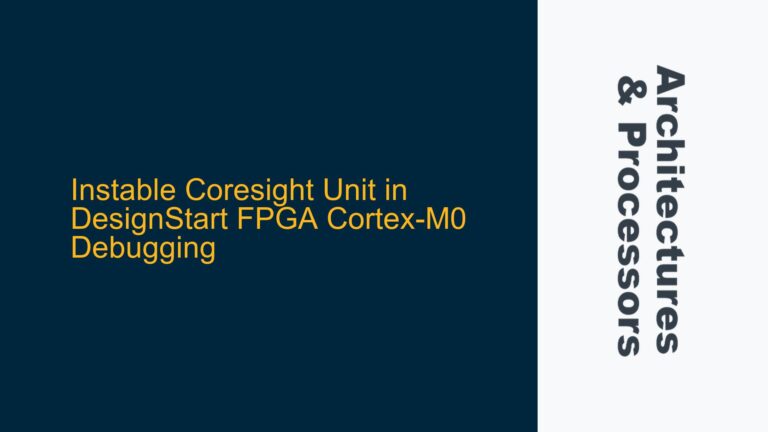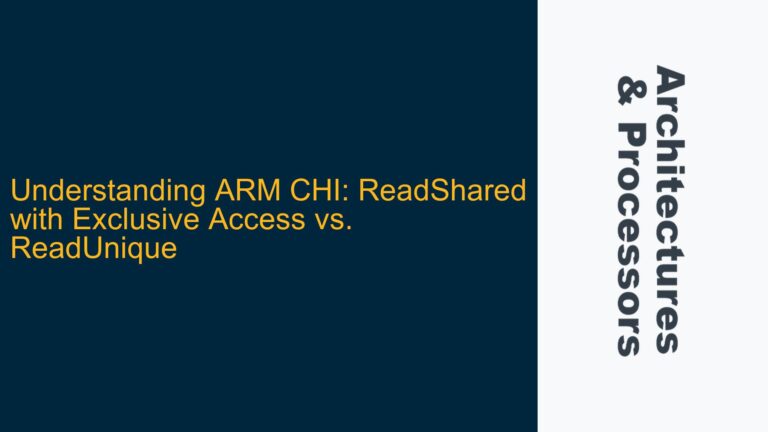SYST_CVR Register Access Violation in User Mode on ARM Cortex-M33
The ARM Cortex-M33 processor, part of the ARMv8-M architecture, is designed with a robust security model that includes privilege levels to separate user code from system-level operations. One of the key features of this architecture is the ability to restrict access to certain registers and peripherals when the processor is operating in User mode. The SYST_CVR (SysTick Current Value Register), located at address 0xE000E018, is one such register that is not directly accessible in User mode. Attempting to access this register while in User mode results in an exception, as observed in the scenario described.
The SYST_CVR register is part of the SysTick timer, a core peripheral in ARM Cortex-M processors used for generating periodic interrupts and measuring time intervals. The SysTick timer is often utilized in real-time operating systems (RTOS) for task scheduling and timekeeping. However, its registers, including SYST_CVR, are typically privileged, meaning they can only be accessed when the processor is in Handler mode or Thread mode with privileged access level.
The issue arises when an application running in User mode attempts to read the SYST_CVR register to obtain the current value of the SysTick timer. Since User mode is an unprivileged execution state, any attempt to access privileged registers results in a fault exception. This behavior is by design, as it prevents user applications from directly manipulating or reading sensitive system resources, thereby enhancing system security and stability.
Privilege Level Mismatch and SysTick Timer Access Restrictions
The root cause of the SYST_CVR access violation in User mode lies in the privilege level mismatch between the User mode and the SysTick timer registers. The ARM Cortex-M33 processor implements a dual-privilege level model: Privileged mode and User mode. In Privileged mode, the software has full access to all processor resources, including the SysTick timer registers. In contrast, User mode restricts access to certain resources to prevent unauthorized or unintended modifications to critical system components.
The SysTick timer, being a core system peripheral, is classified as a privileged resource. This classification is intentional, as the SysTick timer is often used for critical system functions such as task scheduling in an RTOS or timekeeping in embedded applications. Allowing unrestricted access to the SysTick timer from User mode could lead to system instability or security vulnerabilities. For example, a malicious or buggy user application could manipulate the SysTick timer to disrupt task scheduling or cause timing inaccuracies.
The ARMv8-M architecture enforces these access restrictions through the Memory Protection Unit (MPU) and the processor’s exception handling mechanism. When an unprivileged access to a privileged resource is detected, the processor raises a fault exception, typically a UsageFault or HardFault, depending on the configuration of the fault handling system. In the case of the SYST_CVR register, the access violation triggers an exception, preventing the user application from reading the register directly.
Implementing SysTick Timer Access in User Mode via SVC Calls
To enable User mode applications to read the SYST_CVR register without violating privilege level restrictions, a secure and controlled mechanism must be implemented. One common approach is to use Supervisor Call (SVC) instructions to transition from User mode to Privileged mode temporarily. The SVC instruction triggers an exception, transferring control to an exception handler that executes in Privileged mode. Within the exception handler, the SYST_CVR register can be accessed safely, and its value can be returned to the User mode application.
The implementation of this mechanism involves several steps. First, an SVC handler must be defined in the system software. This handler is responsible for reading the SYST_CVR register and returning its value to the calling application. The SVC handler must be designed to ensure that only authorized access to the SysTick timer is permitted, preventing potential misuse by user applications.
Next, the User mode application must invoke the SVC instruction with a specific parameter to indicate the desired operation, such as reading the SYST_CVR register. The SVC handler interprets this parameter and performs the corresponding operation in Privileged mode. Once the operation is complete, the handler returns the result to the User mode application, which can then use the value as needed.
This approach provides a secure and controlled method for User mode applications to access privileged resources like the SYST_CVR register. By leveraging the SVC mechanism, the system maintains the integrity of its privilege levels while still allowing User mode applications to perform necessary operations. Additionally, this method can be extended to provide access to other privileged resources, offering a flexible and scalable solution for managing privilege level transitions in ARM Cortex-M33-based systems.
In summary, the SYST_CVR register is not directly accessible in User mode on the ARM Cortex-M33 processor due to privilege level restrictions. Attempting to access this register in User mode results in an exception, as observed in the described scenario. The root cause of this issue is the privilege level mismatch between User mode and the SysTick timer registers, which are classified as privileged resources. To enable User mode applications to read the SYST_CVR register, a secure mechanism using SVC calls can be implemented. This approach allows controlled access to privileged resources while maintaining system security and stability. By following these steps, developers can effectively manage privilege level transitions and ensure reliable operation of their ARM Cortex-M33-based systems.






